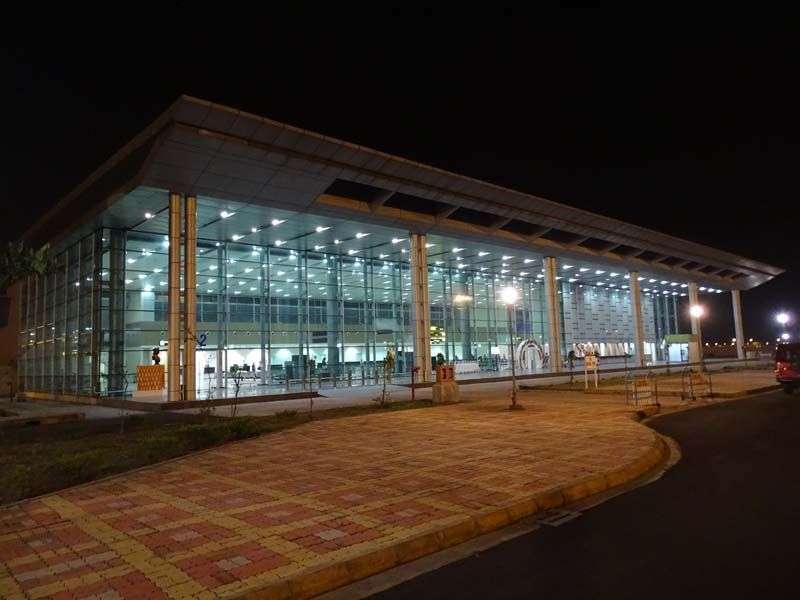West Bengal, a state in eastern India, is home to several airports catering to both domestic and international travelers. The primary airport is Netaji Subhas Chandra Bose International Airport, located in Kolkata, which serves as the main gateway for air travel in the region. Additionally, there are other airports in West Bengal, including Bagdogra Airport near Siliguri, Cooch Behar Airport, Malda Airport, and Kazi Nazrul Islam Airport (Andal Airport) near Durgapur. While Netaji Subhas Chandra Bose International Airport handles a significant portion of both domestic and international air traffic, the other airports primarily serve domestic flights, facilitating connectivity within the state and to nearby regions. These airports play a crucial role in facilitating transportation and connectivity, contributing to the economic and social development of West Bengal.

How many airports in west bengal
- Netaji Subhas Chandra Bose International Airport: Located in Kolkata, it is the primary airport in West Bengal, handling both domestic and international flights.
- Bagdogra Airport: Situated near Siliguri, it serves as a key airport for travelers visiting the northeastern states of India.
- Cooch Behar Airport: Located in Cooch Behar district, it primarily serves domestic flights.
- Malda Airport: Also known as Malda Kazi Nazrul Islam Airport, it is situated in Malda district and handles domestic flights.
- Kazi Nazrul Islam Airport (Andal Airport): Located near Durgapur in Paschim Bardhaman district, it primarily serves domestic flights.
Importance of Airports in West Bengal
- Airports play a crucial role in West Bengal’s connectivity, economy, and tourism industry. Here are some key points highlighting their importance:
- Economic Development: Airports in West Bengal facilitate the movement of goods and people, contributing to economic growth and development. They serve as vital transportation hubs for businesses, enabling trade and commerce both domestically and internationally.
- Tourism Boost: Accessible airports like Netaji Subhas Chandra Bose International Airport and Bagdogra Airport promote tourism by providing convenient entry points for domestic and international travelers. They support the state’s vibrant tourism industry, which includes heritage sites, cultural attractions, and natural wonders.
- Employment Opportunities: Airports generate employment opportunities directly and indirectly, ranging from airport staff and airline personnel to taxi drivers, hotel staff, and tourism operators. They create jobs across various sectors, thereby contributing to livelihoods and economic stability.
- Connectivity: Airports enhance connectivity within West Bengal and with other parts of India and the world. They enable people to travel quickly and efficiently for business, education, healthcare, and leisure purposes, fostering social and cultural exchange.
- Regional Development: Airports in smaller cities like Cooch Behar, Malda, and Durgapur contribute to the development of regional economies by improving accessibility and attracting investment. They stimulate growth in surrounding areas by facilitating trade, tourism, and infrastructure development.
Challenges and Opportunities
Challenges and opportunities exist hand-in-hand in various aspects of life, and the context of West Bengal is no exception. Here’s a breakdown:
Challenges:
- Infrastructure: West Bengal faces challenges in infrastructure development, including transportation, power supply, and urban amenities, which can hinder economic growth and quality of life.
- Unemployment: High levels of unemployment, particularly among the youth, pose a significant challenge, requiring strategies for job creation and skill development.
- Education: Access to quality education and educational infrastructure remains a challenge, impacting the state’s human capital development and future prospects.
- Healthcare: Limited access to quality healthcare services, especially in rural areas, poses challenges to public health outcomes and well-being.
- Environmental Degradation: Pollution, deforestation, and inadequate waste management contribute to environmental degradation, affecting public health and ecological balance.
Opportunities:
- Economic Diversification: West Bengal has opportunities for economic diversification beyond traditional sectors like agriculture and manufacturing, with potential in areas such as information technology, tourism, and renewable energy.
- Infrastructure Investment: Investments in infrastructure projects, such as transportation networks, energy infrastructure, and urban development, can stimulate economic growth and improve quality of life.
- Human Capital Development: Investing in education and skill development programs can enhance the state’s human capital, fostering innovation, entrepreneurship, and productivity.
- Healthcare Innovation: Opportunities exist for innovation and investment in healthcare infrastructure, technology, and services to improve access and quality of healthcare delivery.
- Environmental Conservation: Initiatives for environmental conservation, sustainable resource management, and renewable energy development can create opportunities for green growth and contribute to climate resilience.
Conclusion
In conclusion, West Bengal faces a range of challenges across various sectors, including infrastructure, unemployment, education, healthcare, and environmental degradation. However, amidst these challenges lie opportunities for economic diversification, infrastructure investment, human capital development, healthcare innovation, and environmental conservation. By addressing these challenges and seizing the opportunities through coordinated efforts and sustainable approaches, West Bengal can pave the way for inclusive growth, improved quality of life, and a prosperous future for its residents. It requires collaboration between government, private sector, civil society, and communities to achieve sustainable development and address the needs of all stakeholders effectively.
FAQs
Q: 1. How many airports are there in West Bengal?
Ans: West Bengal has several airports catering to domestic and international flights.
Q: 2 What is the main airport in West Bengal?
Ans: The main airport in West Bengal is Netaji Subhas Chandra Bose International Airport, located in Kolkata.
Q:3.Which other airports are significant in West Bengal?
Ans: Other significant airports in West Bengal include Bagdogra Airport near Siliguri, serving as a gateway to the northeastern states, and Cooch Behar Airport, Malda Airport, and Kazi Nazrul Islam Airport (Andal Airport), which primarily handle domestic flights.
Q: 4Are there any airports under development in West Bengal?
Ans: As of my last update, there were no specific airports under development in West Bengal. However, plans for infrastructure development, including airports, may change over time.






